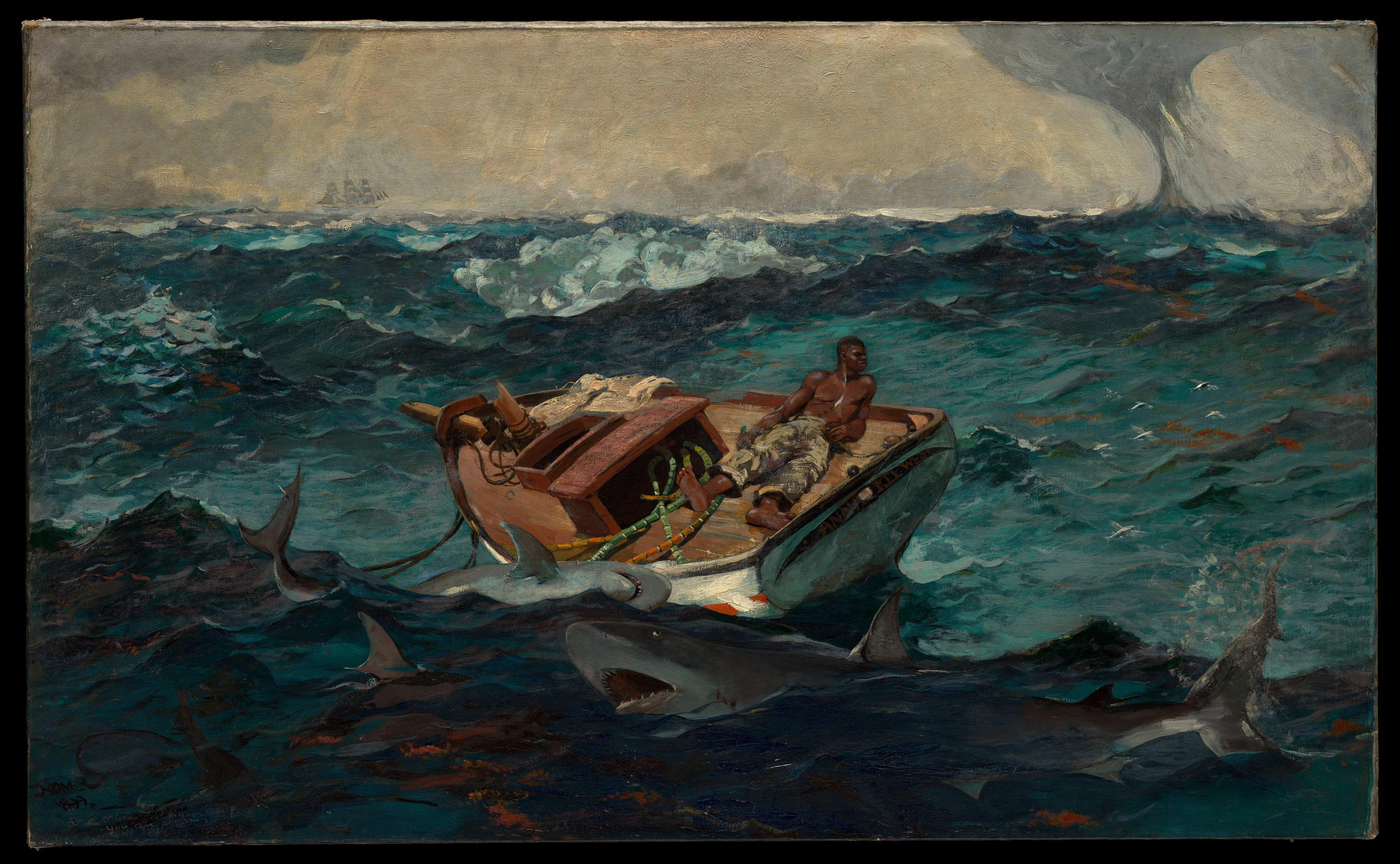In Winslow Homer's epic painting set along the Gulf Stream, a Black man grapples with his potential fate aboard a beleaguered boat, surrounded by sharks and a looming waterspout. This artwork represents the culmination of themes Homer explored throughout his career, notably the tension between humans and the natural world.
Created at the beginning of the 20th century, a period often referred to as the nadir of race relations in America, The Gulf Stream carries profound geopolitical connotations. Homer subtly references the United States' growing imperialistic aspirations with specific inclusions in the painting. Sugarcane stalks strewn across the boat's deck symbolize the Caribbean's vital role in the economic framework of empire, tied directly to the title's ocean current that facilitated trade and is inextricably linked to the brutal history of transatlantic slavery. In this work, Homer intricately blends these complex historical narratives, portraying a narrative of human resilience and survival against the cruel forces of nature.
Today is World Oceans Day when we celebrate our world's shared ocean and our personal connection to the sea, as well as to raise awareness about the crucial role the ocean plays in our lives and the important ways people can help protect it. We hope you liked today's selection! :)
P.S. In our Sea, Ships & Beaches 50 Postcards Set you can find another seascape by Winslow Homer. :) Check it out in the DailyArt Shop; it's full of beautiful marine scenes!
P.P.S. From soldiers to frolicking schoolchildren and New England fishing communities, explore the art of Winslow Homer, painter of America.


 Winslow Homer
Winslow Homer